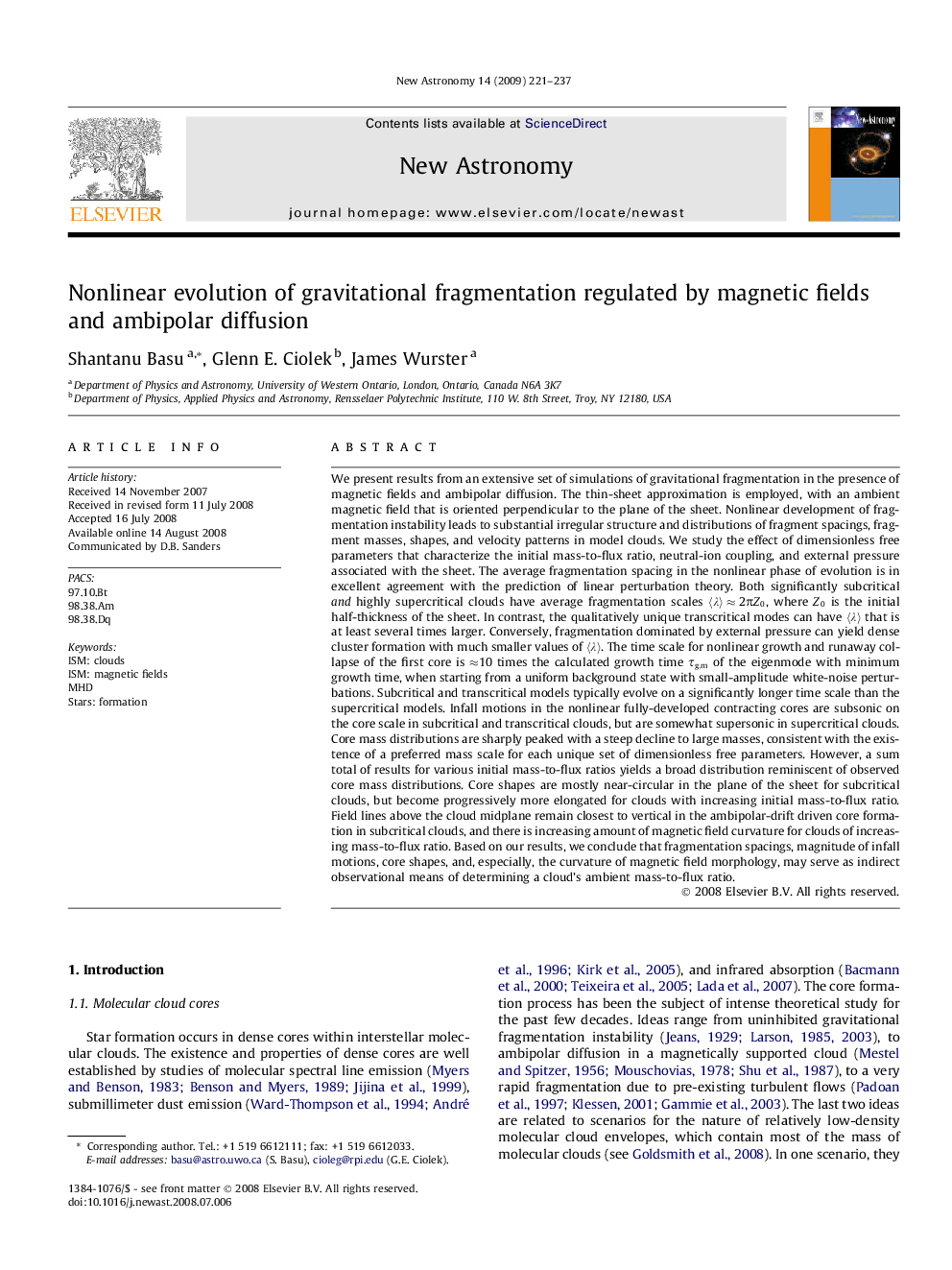| Article ID | Journal | Published Year | Pages | File Type |
|---|---|---|---|---|
| 1779636 | New Astronomy | 2009 | 17 Pages |
We present results from an extensive set of simulations of gravitational fragmentation in the presence of magnetic fields and ambipolar diffusion. The thin-sheet approximation is employed, with an ambient magnetic field that is oriented perpendicular to the plane of the sheet. Nonlinear development of fragmentation instability leads to substantial irregular structure and distributions of fragment spacings, fragment masses, shapes, and velocity patterns in model clouds. We study the effect of dimensionless free parameters that characterize the initial mass-to-flux ratio, neutral-ion coupling, and external pressure associated with the sheet. The average fragmentation spacing in the nonlinear phase of evolution is in excellent agreement with the prediction of linear perturbation theory. Both significantly subcritical and highly supercritical clouds have average fragmentation scales 〈λ〉≈2πZ0〈λ〉≈2πZ0, where Z0Z0 is the initial half-thickness of the sheet. In contrast, the qualitatively unique transcritical modes can have 〈λ〉〈λ〉 that is at least several times larger. Conversely, fragmentation dominated by external pressure can yield dense cluster formation with much smaller values of 〈λ〉〈λ〉. The time scale for nonlinear growth and runaway collapse of the first core is ≈10 times the calculated growth time τg,mτg,m of the eigenmode with minimum growth time, when starting from a uniform background state with small-amplitude white-noise perturbations. Subcritical and transcritical models typically evolve on a significantly longer time scale than the supercritical models. Infall motions in the nonlinear fully-developed contracting cores are subsonic on the core scale in subcritical and transcritical clouds, but are somewhat supersonic in supercritical clouds. Core mass distributions are sharply peaked with a steep decline to large masses, consistent with the existence of a preferred mass scale for each unique set of dimensionless free parameters. However, a sum total of results for various initial mass-to-flux ratios yields a broad distribution reminiscent of observed core mass distributions. Core shapes are mostly near-circular in the plane of the sheet for subcritical clouds, but become progressively more elongated for clouds with increasing initial mass-to-flux ratio. Field lines above the cloud midplane remain closest to vertical in the ambipolar-drift driven core formation in subcritical clouds, and there is increasing amount of magnetic field curvature for clouds of increasing mass-to-flux ratio. Based on our results, we conclude that fragmentation spacings, magnitude of infall motions, core shapes, and, especially, the curvature of magnetic field morphology, may serve as indirect observational means of determining a cloud’s ambient mass-to-flux ratio.
